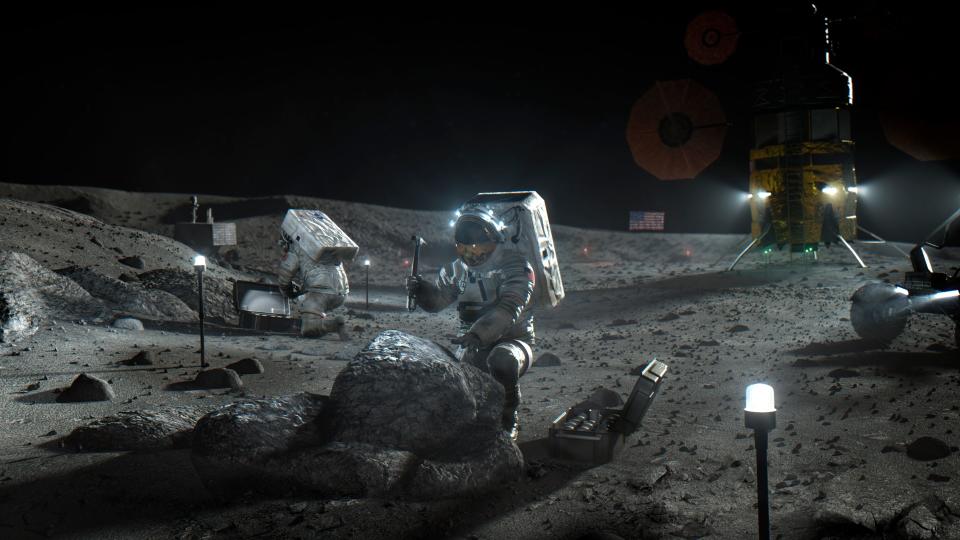NASA will share an 'exciting new discovery' about the moon on Monday. Listen to the announcement live.

On Monday, NASA will share "an exciting new discovery" about the moon.
The space agency has not revealed any details about the discovery, but said it could support "deep-space exploration."
NASA TV will stream live audio of the announcement. You can listen via the embed below.
NASA made a cryptic announcement this week: It has "an exciting new discovery" about the moon, but it's not going to reveal the finding just yet.
Instead, it will share the details in a press briefing on Monday and stream the audio live online. (You can tune in via the embed below.)
"This new discovery contributes to NASA's efforts to learn about the moon in support of deep space exploration," the agency's statement says. "Understanding the science of the moon also helps piece together the broader history of the inner solar system."
NASA's Artemis program aims to send astronauts back to the moon's surface by 2024, then later establish a lunar base from which it can hopscotch the first humans to Mars. It's not yet clear how the mysterious new discovery might affect those plans.

We do know, however, that the discovery was made by NASA's Stratospheric Observatory for Infrared Astronomy, a modified Boeing 747 jet plane that uses a 9-foot telescope to capture infrared images of planets and other objects in our solar system. The plane flies about 41,000 feet above the Earth.
Four NASA officials and scientists will discuss the findings at 12 p.m. ET on Monday:
Paul Hertz, astrophysics division director at NASA
Jacob Bleacher, chief exploration scientist for the Human Exploration and Operations Mission Directorate at NASA
Casey Honniball, postdoctoral fellow at NASA's Goddard Space Flight Center in Greenbelt, Maryland
Naseem Rangwala, project scientist for the SOFIA mission at NASA's Ames Research Center in Mountain View, California
NASA TV will stream audio of the announcement here:
NASA's next missions to the moon are set to search for water
Before it lands astronauts on the lunar surface, NASA plans to learn more about the moon's natural resources – especially its water deposits, which appear to exist mostly as ice clustered near the lunar poles.
Astronauts (or robots) could ostensibly mine that ice, melt it, store it, and use electricity to split the water into liquid oxygen and hydrogen. Both elements are key to making rocket propellant.
So far, NASA thinks most of that ice exists at the moon's South Pole. So in 2022, it plans to send a drill and mass spectrometer there to try to harvest some.
Then in 2023, the agency aims to launch a golf-cart-sized lunar robot called the Volatiles Investigating Polar Exploration Rover, or VIPER. Over the course of its 100-day lifespan, the rover will trundle over rocky terrain, drilling into sections of moon ice and soil to analyze their composition. The rover's main goal is to collect data that NASA can use to make maps of the moon's water resources.

If the moon does indeed hold plenty of water, it could help NASA realize its goal of establishing a permanent lunar base. From there, astronauts could mine and produce fuel that could be used for trips back home or deeper into space.
Harvesting resources on the moon, NASA Administrator Jim Bridenstine said in September, would allow space explorers to start "living off the land."
Read the original article on Business Insider


